- Jeep brought seven new concepts to this year's Easter Jeep Safari drive in Moab, Utah.
- The concepts utilize both custom-manufactured parts and off-the-shelf bits.
- We drove all of them and whittled down our list of favorites.
DRIVEN: Our Favorite Concepts from Easter Jeep Safari 2023
We drove all seven rigs, but walked away really loving four of them
Every year tens of thousands of people descend upon the unassuming town of Moab, Utah, for a wheeling meetup like no other. Easter Jeep Safari is the quintessential Jeep gathering where old faithful models from World War II mingle with the latest and greatest that Jeep and the aftermarket can cobble together.
However, it’s the concepts that the company rolls out that really garner attention. For 2023, Jeep showed off seven ideas that span the gamut from fully electric to stonking V8 power; from high-dollar overlanding to a nostalgia cocktail restomod. After driving all of them, these were our favorites.
Am I Ready for an EV?
- EV ownership works best if you can charge (240V) at home or at work
- If you can’t charge at home, charging at a charging station could take at least 10x longer than at a gas station
- Adding a 240V home charging system could cost up to $1,600 or more
Scrambler 392
What happens when you combine the Jeep Wrangler 392 with its 6.4-liter V8 powertrain and a tiny bit of a Jeep Gladiator pickup truck? You get the Jeep Scrambler 392 Concept. Designers started with a four-door 392 but turned it into a two-door, then added the last 10 inches or so of a Gladiator to turn it into a truck, complete with a functioning tailgate.
The team included massive 40-inch Maxxis MT tires, but also added lightness by swapping out the stock hood, fenders and rear quarter panels for replicas made out of carbon fiber. The crowning glory here are the Bilstein shocks with AccuAir suspension that can give the Scrambler 392 a lift of up to 5.5 inches with the push of a button.
With tires this big, the Scrambler can pretty much handle any hole or bump you throw at it, but with its low four-wheel-drive range it’s easy to make short work of rocky hill climbs. However, with 470 ponies and an equal amount of torque on tap, it’s easy for newbies to drive too fast. Remember, when rock crawling your mantra should be, “As slow as possible, and as fast as necessary.”
Smoother sections are pretty fun thanks to the responsive throttle, but there is a caveat here. Remember that added clearance doesn’t necessarily translate into added wheel travel. You need long-travel shocks to do that, so I wouldn’t consider the Scrambler a whoop-eater. It would likely shred on a dry lake bed, though!
1978 Cherokee 4xe
My nostalgia nodules are in full effect as soon as I touch the door handle of the 1978 Jeep Cherokee 4xe Concept. Instead of the beefy, plastic handle of a modern vehicle, I grab a thin metal handle and push a button with my thumb. The door opens with a creak and closes with a hollow slam. These are the doors of my childhood.
Jeep designers bought the 1978 Cherokee SJ on Craigslist and threw the body on top of a 2022 Wrangler Rubicon 4xe. Wheelwells are filled out by 37-inch BFGoodrich MT tires and there are all kinds of thoughtful '70s-inspired touches. The yellow paint with orange and red accents is on point, as are the slotted mag wheels and 4xe badging in 1970s-era font.
Driving this one is a bit of a trip thanks to the ridiculously large hood. Granted, our quick drive route is not difficult, but I would likely want a spotter to help me up any advanced obstacles, as my front wheels feel like they are all the way in Colorado.
The dash is all modern Wrangler, and honestly, it feels wrong to have such a thick steering wheel in my hands. I’m aching for one of those skinny ones with the finger indents around it. However, the 8-track installed where the window controls are typically located is choice (albeit nonfunctional). The Cherokee still has its roll-up windows, but they are permanently fixed in the down position as the dash is too bulky to allow the handles to move.
Still, the rig brings out a smile on my face. It’s not the quickest of the lot, nor does it have a fancy suspension or a massive lift. It’s just cool.
Grand Wagoneer Overland
To prove Jeep can hang with the bougie crowd, the company showed off the Grand Wagoneer Overland Concept. The most surprising thing here is how good the beast looks with 35-inch BFGoodrich MT tires. Seriously, I’d wheel the stuffing out of this thing with those shoes!
Aside from the requisite winch and lights, this concept is graced by a Redtail Overland Skyloft rooftop tent that can retail for up to $30,000. Yes, that’s correct. Thirty Gs for a tent. But hey, if you want a hard-sided, solar-powered carbon-fiber rooftop tent with charging ports, dual-pane windows, a heater and an air conditioner with easy setup and breakdown, you’re going to pay.
The tent is accessed through a side ladder or from the interior, where Jeep removed the second and third rows, created a trapdoor out of the sunroof opening, and fashioned a living room of sorts, complete with beanbags, throw pillows and a plush rug. Step on a side table to get through the roof and into the loft area.
I love the plaid wool flannel on the front seats, and before I start off, I crank up the heat and turn on the massage feature. The Grand Wagoneer is a bit easier to drive since its four-wheel-drive system isn’t quite as aggressive as the Wrangler's. Here the shift from first to second is smooth whereas in the Wrangler it can be a bit abrupt.
However, the decreased approach and breakover angles mean I have to pick my line carefully. A few folks scrape the front skid plate a bit, although I don’t have a problem. The tent weighs around 300 pounds and I hardly feel it up there when the Wagoneer gets a little tippy on a rock climb. Under the hood is Jeep’s twin-turbo 3.0-liter Hurricane 510 engine with — you guessed it — 510 horsepower.
Wrangler Magneto 3.0
But if I have to pick a favorite, it’s the all-electric Magneto 3.0. This is the third and final year for the Magneto but it’s got more power and range than its previous iterations. Based on a 2020 two-door Wrangler Rubicon chassis, the Magneto gets a raked windshield, wider door openings, 40-inch tires and a six-speed manual transmission.
I have to think of the transmission as a speed limiter in order to understand it, since the Magneto is capable of starting in any gear. For slow-speed rock crawling, first or second gear is appropriate. For faster desert running, third or fourth would allow for enough speed, while highway driving should be done in the top two gears.
To drive it I have to push in the clutch and put the Magneto in gear. I chose third gear at first. Then, instead of slipping the clutch like I would on my own ICE vehicle, I just let the clutch out fully and then hit the throttle. It’s tough to get used to, but once I do, it’s pretty dope. I can row through the gears if I want, essentially dumping the clutch on every upshift, but it’s not necessary.
When I get to the steep hill climb, I put it in first gear, again to obey the “as slow as possible, as fast as necessary” rule, and the Magneto climbs right up. I mean, it would be hard not to with 650 horsepower and 900 lb-ft of torque, am I right?
However, like the Scrambler 392 concept, the Magneto doesn’t have a vast amount of wheel travel, so it’s tough to use all the power out here in the rocks and whoops. To exploit what’s coming out of the single electric motor I would definitely need a dry lake bed or airport runway.
Now that’s an idea. U-Drag between the Magneto 3.0 and Scrambler 392, anyone?
Edmunds says
All of the concepts that Jeep brought to the Easter Jeep Safari drive were great in their own way. But these stood out from the rest.

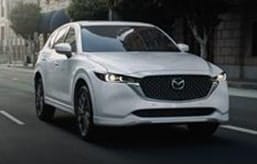
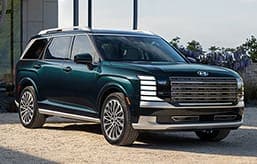
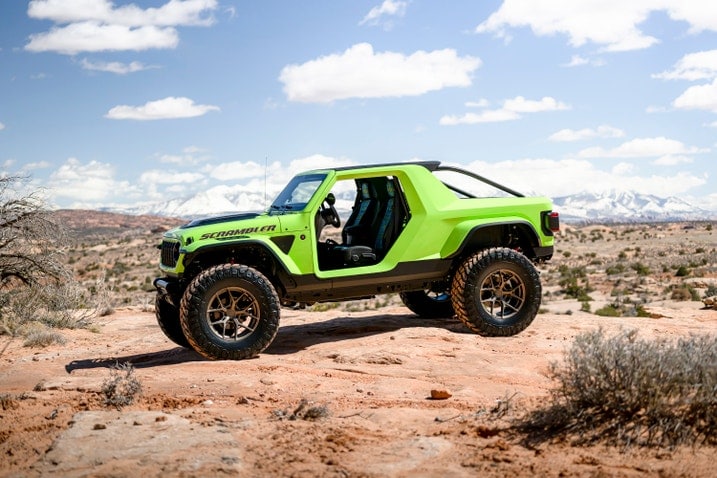
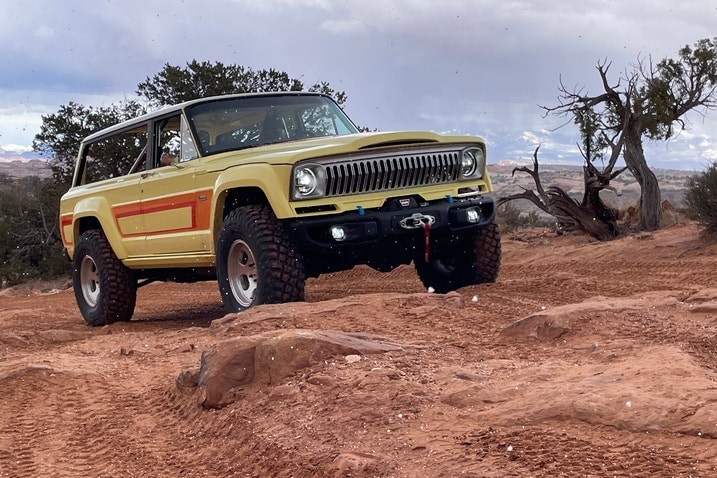
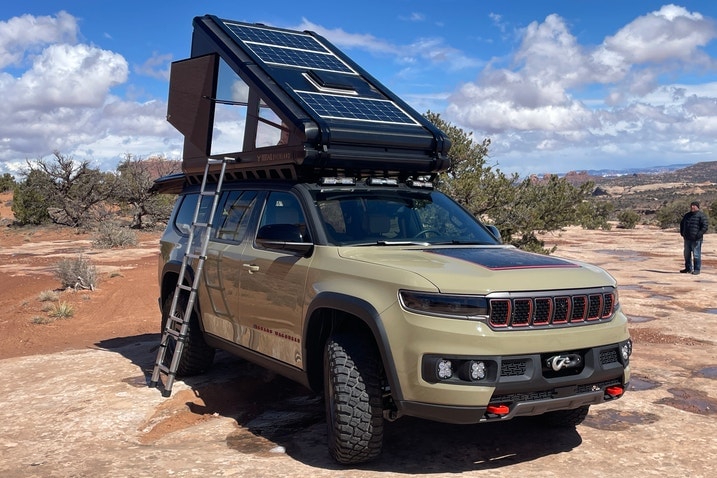
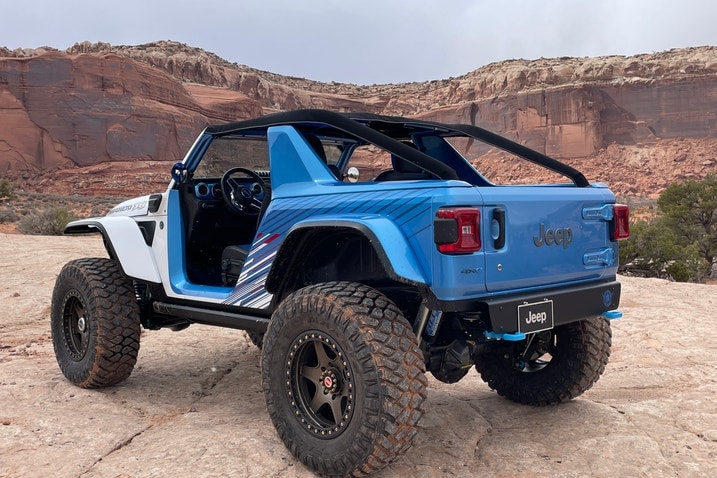
.jpg) by
by